Modern Compact Cities: How Much Greenery Do We Need?
Abstract
1. Introduction
2. Urban Green and Blue Space: Perception, Use, Quality, Accessibility and Health Risks
3. Green Space Availability and Novel Approaches for the Design and Planning of Compact Cities
4. Conclusions
Author Contributions
Funding
Acknowledgments
Conflicts of Interest
References
- Saaty, T.; De Paola, P. Rethinking Design and Urban Planning for the Cities of the Future. Buildings 2017, 7, 76. [Google Scholar] [CrossRef]
- Haaland, C.; van den Bosch, C.K. Challenges and strategies for urban green-space planning in cities undergoing densification: A review. Urban For. Urban Green. 2015, 14, 760–771. [Google Scholar] [CrossRef]
- Stone, B.; Hess, J.J.; Frumkin, H. Urban Form and Extreme Heat Events: Are Sprawling Cities More Vulnerable to Climate Change Than Compact Cities? Environ. Health Perspect. 2010, 118, 1425–1428. [Google Scholar] [CrossRef] [PubMed]
- Westerink, J.; Haase, D.; Bauer, A.; Ravetz, J.; Jarrige, F.; Aalbers, C.B.E.M. Dealing with Sustainability Trade-Offs of the Compact City in Peri-Urban Planning Across European City Regions. Eur. Plan. Stud. 2013, 21, 473–497. [Google Scholar] [CrossRef]
- Mouratidis, K. Is compact city livable? The impact of compact versus sprawled neighbourhoods on neighbourhood satisfaction. Urban Stud. 2017. [Google Scholar] [CrossRef]
- Lin, J.-J.; Yang, A.-T. Does the Compact-City Paradigm Foster Sustainability? An Empirical Study in Taiwan. Environ. Plan. B Plan. Des. 2006, 33, 365–380. [Google Scholar] [CrossRef]
- Artmann, M.; Kohler, M.; Meinel, G.; Gan, J.; Ioja, I.-C. How smart growth and green infrastructure can mutually support each other—A conceptual framework for compact and green cities. Ecol. Indic. 2017, 1–13. [Google Scholar] [CrossRef]
- Lemonsu, A.; Viguié, V.; Daniel, M.; Masson, V. Vulnerability to heat waves: Impact of urban expansion scenarios on urban heat island and heat stress in Paris (France). Urban Clim. 2015, 14, 586–605. [Google Scholar] [CrossRef]
- Næss, P. Urban Form, Sustainability and Health: The Case of Greater Oslo. Eur. Plan. Stud. 2014, 22, 1524–1543. [Google Scholar] [CrossRef]
- Zhou, B.; Rybski, D.; Kropp, J.P. The role of city size and urban form in the surface urban heat island. Sci. Rep. 2017, 7, 1–9. [Google Scholar] [CrossRef] [PubMed]
- Tappert, S.; Klöti, T.; Drilling, M. Contested urban green spaces in the compact city: The (re-)negotiation of urban gardening in Swiss cities. Landsc. Urban Plan. 2018, 170, 69–78. [Google Scholar] [CrossRef]
- Nikolaidou, S.; Klöti, T.; Tappert, S.; Drilling, M. Urban Gardening and Green Space Governance: Towards New Collaborative Planning Practices. Urban Plan. 2016, 1, 5. [Google Scholar] [CrossRef]
- Russo, A.; Escobedo, F.J.; Cirella, G.T.; Zerbe, S. Edible green infrastructure: An approach and review of provisioning ecosystem services and disservices in urban environments. Agric. Ecosyst. Environ. 2017, 242, 53–66. [Google Scholar] [CrossRef]
- Jennings, V.; Larson, L.; Yun, J. Advancing Sustainability through Urban Green Space: Cultural Ecosystem Services, Equity and Social Determinants of Health. Int. J. Environ. Res. Public Health 2016, 13, 196. [Google Scholar] [CrossRef] [PubMed]
- Hunter, A.J.; Luck, G.W. Defining and measuring the social-ecological quality of urban greenspace: A semi-systematic review. Urban Ecosyst. 2015, 18, 1139–1163. [Google Scholar] [CrossRef]
- Jim, C.Y.; Shan, X. Socioeconomic effect on perception of urban green spaces in Guangzhou, China. Cities 2013, 31, 123–131. [Google Scholar] [CrossRef]
- Zhang, Y.; Van den Berg, A.; Van Dijk, T.; Weitkamp, G. Quality over Quantity: Contribution of Urban Green Space to Neighborhood Satisfaction. Int. J. Environ. Res. Public Health 2017, 14, 535. [Google Scholar] [CrossRef] [PubMed]
- Arvanitidis, P.A.; Lalenis, K.; Petrakos, G.; Psycharis, Y. Economic aspects of urban green space: A survey of perceptions and attitudes. Int. J. Environ. Technol. Manag. 2009, 11, 143. [Google Scholar] [CrossRef]
- Tian, Y.; Jim, C.Y.; Wang, H. Assessing the landscape and ecological quality of urban green spaces in a compact city. Landsc. Urban Plan. 2014, 121, 97–108. [Google Scholar] [CrossRef]
- Jerrett, M.; van den Bosch, M. Nature Exposure Gets a Boost From a Cluster Randomized Trial on the Mental Health Benefits of Greening Vacant Lots. JAMA Netw. Open 2018, 1, e180299. [Google Scholar] [CrossRef]
- Fischer, T.B.; Fawcett, P.; Nowacki, J.; Clement, S.; Hayes, S.; Jha-Thakur, U. Consideration of urban green space in impact assessments for health. Impact Assess. Proj. Apprais. 2018, 36, 32–44. [Google Scholar] [CrossRef]
- Cariñanos, P.; Casares-Porcel, M. Urban green zones and related pollen allergy: A review. Some guidelines for designing spaces with low allergy impact. Landsc. Urban Plan. 2011, 101, 205–214. [Google Scholar] [CrossRef]
- Calfapietra, C.; Fares, S.; Manes, F.; Morani, A.; Sgrigna, G.; Loreto, F. Role of Biogenic Volatile Organic Compounds (BVOC) emitted by urban trees on ozone concentration in cities: A review. Environ. Pollut. 2013, 183, 71–80. [Google Scholar] [CrossRef] [PubMed]
- Ren, Y.; Qu, Z.; Du, Y.; Xu, R.; Ma, D.; Yang, G.; Shi, Y.; Fan, X.; Tani, A.; Guo, P.; et al. Air quality and health effects of biogenic volatile organic compounds emissions from urban green spaces and the mitigation strategies. Environ. Pollut. 2017, 230, 849–861. [Google Scholar] [CrossRef] [PubMed]
- Hansford, K.M.; Fonville, M.; Gillingham, E.L.; Coipan, E.C.; Pietzsch, M.E.; Krawczyk, A.I.; Vaux, A.G.C.; Cull, B.; Sprong, H.; Medlock, J.M. Ticks and Borrelia in urban and peri-urban green space habitats in a city in southern England. Ticks Tick Borne Dis. 2017, 8, 353–361. [Google Scholar] [CrossRef] [PubMed]
- Jim, C.Y.; Chen, W.Y. Perception and Attitude of Residents Toward Urban Green Spaces in Guangzhou (China). Environ. Manag. 2006, 38, 338–349. [Google Scholar] [CrossRef] [PubMed]
- Chang, J.; Qu, Z.; Xu, R.; Pan, K.; Xu, B.; Min, Y.; Ren, Y.; Yang, G.; Ge, Y. Assessing the ecosystem services provided by urban green spaces along urban center-edge gradients. Sci. Rep. 2017, 7, 11226. [Google Scholar] [CrossRef] [PubMed]
- Carmona, M. Re-theorising contemporary public space: A new narrative and a new normative. J. Urban. Int. Res. Placemaking Urban Sustain. 2015, 8, 373–405. [Google Scholar] [CrossRef]
- Bertram, C.; Rehdanz, K. Preferences for cultural urban ecosystem services: Comparing attitudes, perception and use. Ecosyst. Serv. 2015, 12, 187–199. [Google Scholar] [CrossRef]
- Arnberger, A.; Eder, R. Are urban visitors’ general preferences for green-spaces similar to their preferences when seeking stress relief? Urban For. Urban Green. 2015, 14, 872–882. [Google Scholar] [CrossRef]
- Natural England. ‘Nature Nearby’ Accessible Natural Greenspace Guidance. Available online: http://webarchive.nationalarchives.gov.uk/20150902180000/http://publications.naturalengland.org.uk/publication/40004 (accessed on 28 September 2018).
- Byrne, J.; Sipe, N.; Searle, G. Green around the gills? The challenge of density for urban greenspace planning in SEQ. Aust. Plan. 2010, 47, 162–177. [Google Scholar] [CrossRef]
- Rupprecht, C.D.D.; Byrne, J.A.; Ueda, H.; Lo, A.Y. ‘It’s real, not fake like a park’: Residents’ perception and use of informal urban green-space in Brisbane, Australia and Sapporo, Japan. Landsc. Urban Plan. 2015, 143, 205–218. [Google Scholar] [CrossRef]
- Rupprecht, C.D.D.; Byrne, J.A. Informal Urban Green-Space: Comparison of Quantity and Characteristics in Brisbane, Australia and Sapporo, Japan. PLoS ONE 2014, 9, e99784. [Google Scholar] [CrossRef] [PubMed]
- Kabisch, N.; Strohbach, M.; Haase, D.; Kronenberg, J. Urban green space availability in European cities. Ecol. Indic. 2016, 70, 586–596. [Google Scholar] [CrossRef]
- World Health Organization. Health Indicators of Sustainable Cities in the Context of the Rio+20 UN Conference on Sustainable Development; WHO: Geneva, Switzerland, 2012. [Google Scholar]
- Gantiva, J.A.F.; Barajas, D.E.P.; Rajabifard, A. Papers Methodological Proposal for Measuring Urban Green Space per Capita in a Land-Use Cover Change (LUCC) Model: Bogota, D.C., Colombia case study. In Conferencia y Reunion Anual Comision 7 FIG; Universidad de los Andes: Cartegena, Columbia, 2017. [Google Scholar]
- Mensah, C.A. Sustaining Urban Green Spaces in Africa: A Case Study of Kumasi Metropolis, Ghana. Ph.D. Thesis, University of Birmingham, Edgbaston, Birmingham, UK, 2015. [Google Scholar]
- Nero, B.F. Urban Green Spaces Enhance Carbon Sequestration and Conserve Biodiversity in Cities of the Global South Case of Kumasi, Ghana. Ph.D. Thesis, Rheinischen Friedrich-Wilhelms-Universität Bonn, Nandom, Ghana, 2017. [Google Scholar]
- Tiran, J.; Kallay, T.; Szuppinger, P. Baseline Study on the Status Quo of Regional UGS Governance and European Good Practices. Available online: https://www.interreg-central.eu/Content.Node/UGB/Baseline-Study.pdf (accessed on 28 September 2018).
- European Green Capital 2016—Ljubljana. Available online: http://ec.europa.eu/environment/europeangreencapital/winning-cities/2016-ljubljana/ (accessed on 21 February 2018).
- Száraz, L.; Nastran, M. Ljubljana, Slovenia—Case Study City Portrait. 2015. Available online: https://greensurge.eu/filer/GREEN_SURGE_Report_of_City_Portraits.pdf (accessed on 18 July 2018).
- Badiu, D.L.; Ioja, C.I.; Patroescu, M.; Breuste, J.; Artmann, M.; Niţa, M.R.; Gradinaru, S.R.; Hossu, C.A.; Onose, D.A. Is urban green space per capita a valuable target to achieve cities’ sustainability goals? Romania as a case study. Ecol. Indic. 2016, 70, 53–66. [Google Scholar] [CrossRef]
- Sugiyama, T.; Carver, A.; Koohsari, M.J.; Veitch, J. Advantages of public green spaces in enhancing population health. Landsc. Urban Plan. 2018, 178, 12–17. [Google Scholar] [CrossRef]
- Li, H.; Ding, L.; Ren, M.; Li, C.; Wang, H. Sponge City Construction in China: A Survey of the Challenges and Opportunities. Water 2017, 9, 594. [Google Scholar] [CrossRef]
- Emilsson, T.; Ode Sang, Å. Impacts of Climate Change on Urban Areas and Nature-Based Solutions for Adaptation. In Nature-Based Solutions to Climate Change Adaptation in Urban Areas: Linkages between Science, Policy and Practice; Kabisch, N., Korn, H., Stadler, J., Bonn, A., Eds.; Springer International Publishing: New York, NY, USA, 2017; pp. 15–27. ISBN 978-3-319-56091-5. [Google Scholar]
- Newman, P. Biophilic urbanism: A case study on Singapore. Aust. Plan. 2014, 51, 47–65. [Google Scholar] [CrossRef]
- Yuen, B. Creating the Garden City: The Singapore Experience. Urban Stud. 1996, 33, 955–970. [Google Scholar] [CrossRef]
- Gardens by the Bay Gardens by the Bay. Available online: www.gardensbythebay.com.sg/en.html (accessed on 12 September 2018).
- Bachrach, J.S. The City in a Garden: A History of Chicago’s Parks, 2nd ed.; Center for American Places: Santa Fe, NM, USA, 2012. [Google Scholar]
- Pérez-Urrestarazu, L.; Fernández-Cañero, R.; Franco-Salas, A.; Egea, G. Vertical Greening Systems and Sustainable Cities. J. Urban Technol. 2015, 22, 65–85. [Google Scholar] [CrossRef]
- Helfand, G.E.; Sik Park, J.; Nassauer, J.I.; Kosek, S. The economics of native plants in residential landscape designs. Landsc. Urban Plan. 2006, 78, 229–240. [Google Scholar] [CrossRef]
- Alam, H.; Khattak, J.Z.K.; Ppoyil, S.B.T.; Kurup, S.; Ksiksi, T.S. Landscaping with native plants in the UAE: A review. Emirates J. Food Agric. 2017, 29, 729–741. [Google Scholar] [CrossRef]
- Trzyna, T. Best Practice Protected Area Guidelines Series No. 22. In Urban Protected Areas: Profiles and Best Practice Guidelines; IUCN: Gland, Switzerland, 2014; ISBN 9782831716527. [Google Scholar]
- Russo, A.; Cirella, G.T. Biophilic Cities: Planning for Sustainable and Smart Urban Environments. In Smart Cities Movement in BRICS; Aijaz, R., Ed.; Observer Research Foundation and Global Policy Journal: New Delhi, India, 2017; pp. 153–159. ISBN 978-81-86818-29-9. [Google Scholar]
- SITES SITES v2 Rating System For Sustainable Land Design and Development. Available online: http://www.sustainablesites.org/resources (accessed on 10 May 2016).
- Dogse, P. Toward Urban Biosphere Reserves. Ann. N. Y. Acad. Sci. 2004, 1023, 10–48. [Google Scholar] [CrossRef] [PubMed]
- UNESCO MAB Programme | United Nations Educational, Scientific and Cultural Organization. Available online: http://www.unesco.org/new/en/natural-sciences/environment/ecological-sciences/ (accessed on 10 May 2018).
- Kim, K.-G. The Application of the Biosphere Reserve Concept to Urban Areas: The Case of Green Rooftops for Habitat Network in Seoul. Ann. N. Y. Acad. Sci. 2004, 1023, 187–214. [Google Scholar] [CrossRef] [PubMed]
- Wang, Q.; Fu, W.; Yu, S.; Allan, L.; Garg, A.; Gu, M. Mathematical model and case study of wind-induced responses for a vertical forest. J. Wind Eng. Ind. Aerodyn. 2018, 179, 260–272. [Google Scholar] [CrossRef]
- Boeri, S. A Vertical Forest: Instructions Booklet for the Prototype of a Forest City = Un Bosco Verticale: Libretto di Istruzioni Per Il Prototipo Di Una Città Foresta; Musante, G., Muzzonigro, A., Eds.; Corraini Edizion: Mantova, Italy, 2015. [Google Scholar]
- Boeri, S. Forest City. Available online: https://www.stefanoboeriarchitetti.net/en/project/forest-city/ (accessed on 2 August 2018).
- Housing and Development Board (HDB) Tengah, The Forest Town. Available online: http://www20.hdb.gov.sg/fi10/fi10349p.nsf/tengah/index.html# (accessed on 12 September 2018).
- Lau, S.S.Y.; Yang, F. Introducing Healing Gardens into a Compact University Campus: Design Natural Space to Create Healthy and Sustainable Campuses. Landsc. Res. 2009, 34, 55–81. [Google Scholar] [CrossRef]
- Eckerling, M. Guidelines for designing healing gardens. J. Ther. Hortic. 1996, 8, 21–25. [Google Scholar]
- Zhang, H.; Lin, S.-H. Affective appraisal of residents and visual elements in the neighborhood: A case study in an established suburban community. Landsc. Urban Plan. 2011, 101, 11–21. [Google Scholar] [CrossRef]
- Berkovic, S.; Yezioro, A.; Bitan, A. Study of thermal comfort in courtyards in a hot arid climate. Sol. Energy 2012, 86, 1173–1186. [Google Scholar] [CrossRef]
- Wania, A.; Bruse, M.; Blond, N.; Weber, C. Analysing the influence of different street vegetation on traffic-induced particle dispersion using microscale simulations. J. Environ. Manag. 2012, 94, 91–101. [Google Scholar] [CrossRef] [PubMed]
- Whittinghill, L.J.; Rowe, D.B. The role of green roof technology in urban agriculture. Renew. Agric. Food Syst. 2012, 27, 314–322. [Google Scholar] [CrossRef]
- Taleb, D.; Abu-Hijleh, B. Urban heat islands: Potential effect of organic and structured urban configurations on temperature variations in Dubai, UAE. Renew. Energy 2013, 50, 747–762. [Google Scholar] [CrossRef]
- Bigirimana, J.; Bogaert, J.; De Cannière, C.; Bigendako, M.-J.; Parmentier, I. Domestic garden plant diversity in Bujumbura, Burundi: Role of the socio-economical status of the neighborhood and alien species invasion risk. Landsc. Urban Plan. 2012, 107, 118–126. [Google Scholar] [CrossRef]
- Li, W.C.; Yeung, K.K.A. A comprehensive study of green roof performance from environmental perspective. Int. J. Sustain. Built Environ. 2014, 3, 127–134. [Google Scholar] [CrossRef]
- Ren, Z.; He, X.; Zheng, H.; Zhang, D.; Yu, X.; Shen, G.; Guo, R. Estimation of the Relationship between Urban Park Characteristics and Park Cool Island Intensity by Remote Sensing Data and Field Measurement. Forests 2013, 4, 868–886. [Google Scholar] [CrossRef]
- Curran, W.; Hamilton, T. Just green enough: Contesting environmental gentrification in Greenpoint, Brooklyn. Local Environ. 2012, 17, 1027–1042. [Google Scholar] [CrossRef]
- Wolch, J.R.; Byrne, J.; Newell, J.P. Urban green space, public health and environmental justice: The challenge of making cities ‘just green enough’. Landsc. Urban Plan. 2014, 125, 234–244. [Google Scholar] [CrossRef]
- Rupprecht, C.D.D.; Byrne, J.A. Informal Urban Green Space as Anti-Gentrification Strategy. In Just Green Enough: Urban Development and Environmental Gentrification; Curran, W., Hamilton, T., Eds.; Routledge in Association with GSE Research: Abingdon, UK, 2017; pp. 209–226. [Google Scholar]
- Rupprecht, C.D.D.; Byrne, J.A. Informal urban greenspace: A typology and trilingual systematic review of its role for urban residents and trends in the literature. Urban For. Urban Green. 2014, 13, 597–611. [Google Scholar] [CrossRef]
- Riley, C.; Perry, K.; Ard, K.; Gardiner, M. Asset or Liability? Ecological and Sociological Tradeoffs of Urban Spontaneous Vegetation on Vacant Land in Shrinking Cities. Sustainability 2018, 10, 2139. [Google Scholar] [CrossRef]
- South, E.C.; Hohl, B.C.; Kondo, M.C.; MacDonald, J.M.; Branas, C.C. Effect of Greening Vacant Land on Mental Health of Community-Dwelling Adults. JAMA Netw. Open 2018, 1, e180298. [Google Scholar] [CrossRef]
- Rokem, J.; Boano, C. Urban Geopolitics: Rethinking Planning in Contested Cities; Routledge: Abingdon, UK, 2017; ISBN 9781315659275. [Google Scholar]
- Völker, S.; Kistemann, T. Developing the urban blue: Comparative health responses to blue and green urban open spaces in Germany. Health Place 2015, 35, 196–205. [Google Scholar] [CrossRef] [PubMed]
- Ward, C.D.; Parker, C.M.; Shackleton, C.M. The use and appreciation of botanical gardens as urban green spaces in South Africa. Urban For. Urban Green. 2010, 9, 49–55. [Google Scholar] [CrossRef]
- Zhang, L.; Tan, P.Y.; Diehl, J.A. A conceptual framework for studying urban green spaces effects on health. J. Urban Ecol. 2017, 3. [Google Scholar] [CrossRef]
- Astell-Burt, T.; Feng, X.; Kolt, G.S. Mental health benefits of neighborhood green space are stronger among physically active adults in middle-to-older age: Evidence from 260,061 Australians. Prev. Med. (Baltim). 2013, 57, 601–606. [Google Scholar] [CrossRef] [PubMed]
- Jim, C.Y. Sustainable urban greening strategies for compact cities in developing and developed economies. Urban Ecosyst. 2013, 16, 741–761. [Google Scholar] [CrossRef]
- Jansson, M. Green space in compact cities: The benefits and values of urban ecosystem services in planning. Nord. J. Archit. Res. 2014, 26, 139–160. [Google Scholar]
- Ruskin, J. Sesame and Lilies; Yale University Press: New Haven, CT, USA, 2002. [Google Scholar]
- Howard, E. Garden Cities of To-morrow (Being the Second Edition to To-morrow: A Peaceful Path to Real Reform); Swan Sonnenschein and Co. Ltd.: London, UK, 1898. [Google Scholar]
- Garland, L. The case for high-density compact cities. Inpractice 2016. Available online: https://www.researchgate.net/publication/314078952_The_Case_for_High-Density_Compact_Cities (accessed on 29 September 2018).
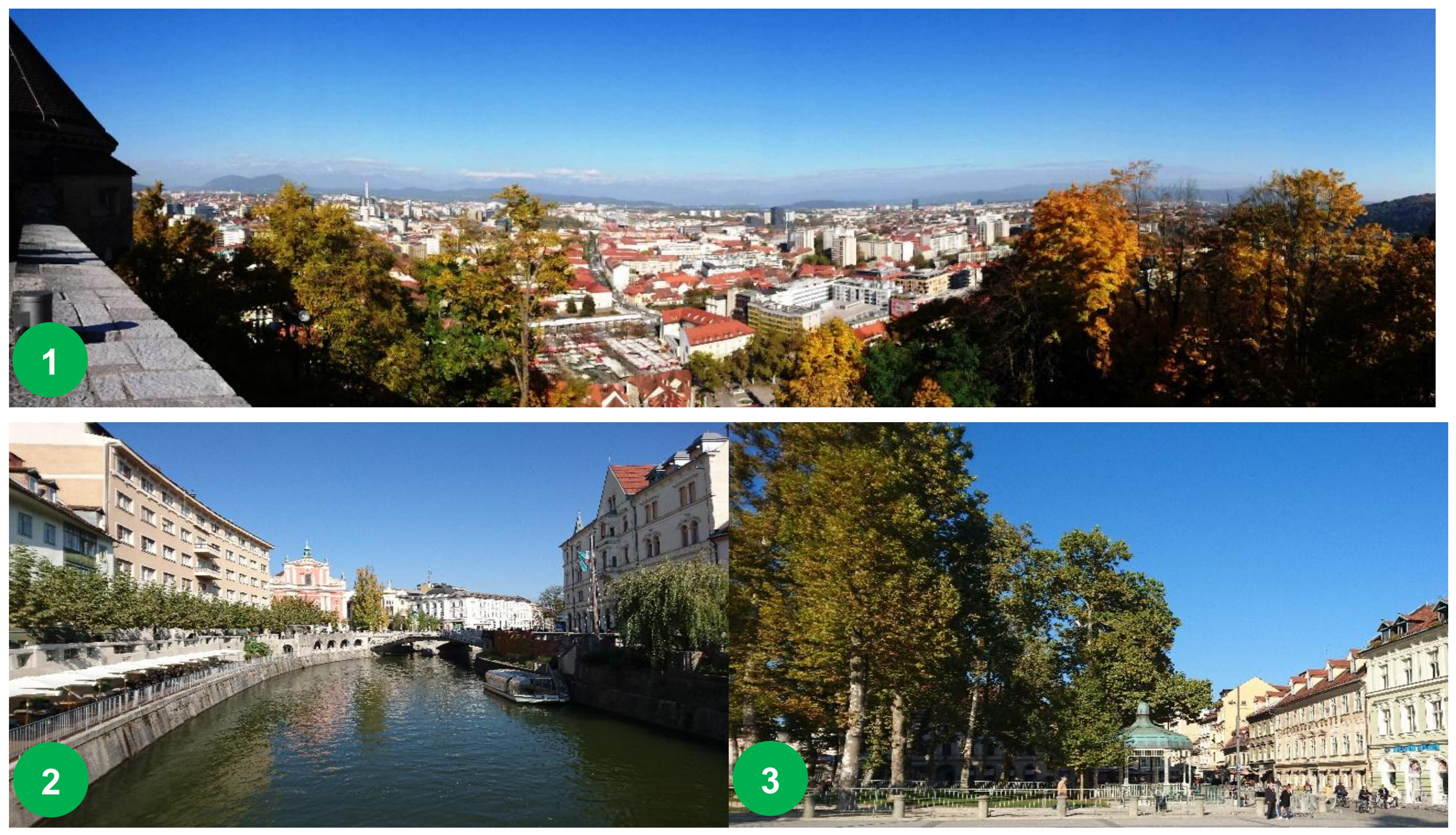
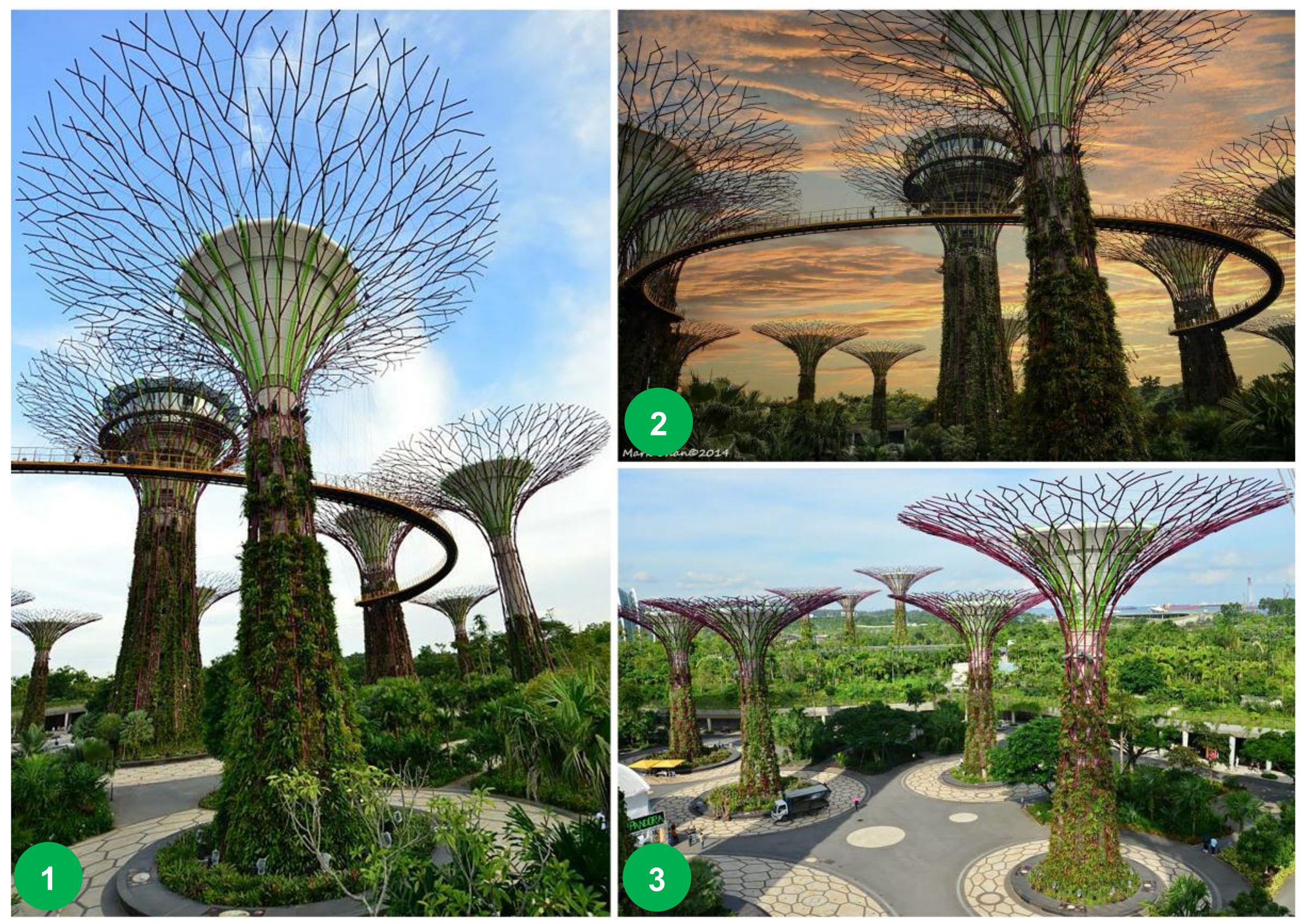
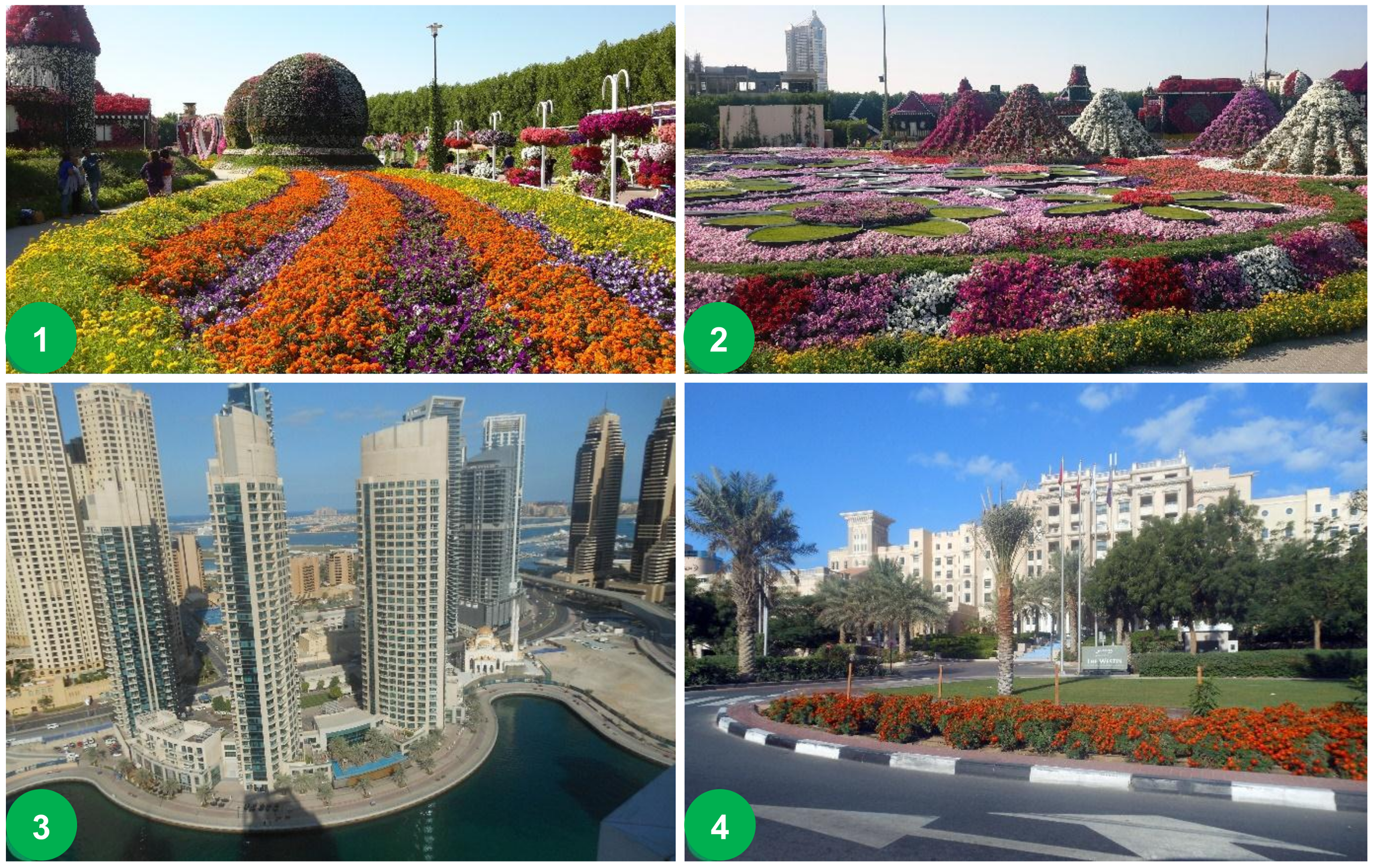
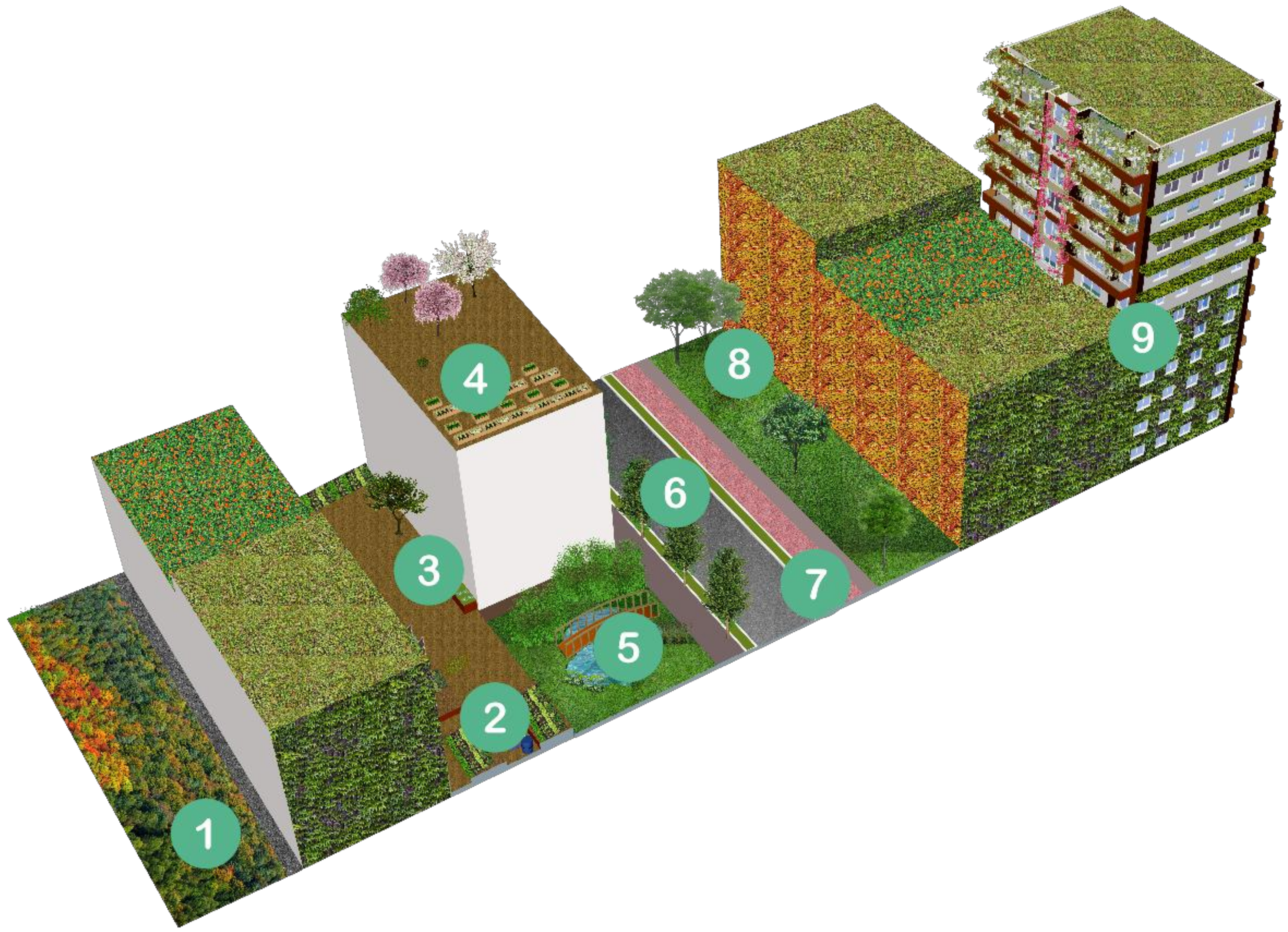
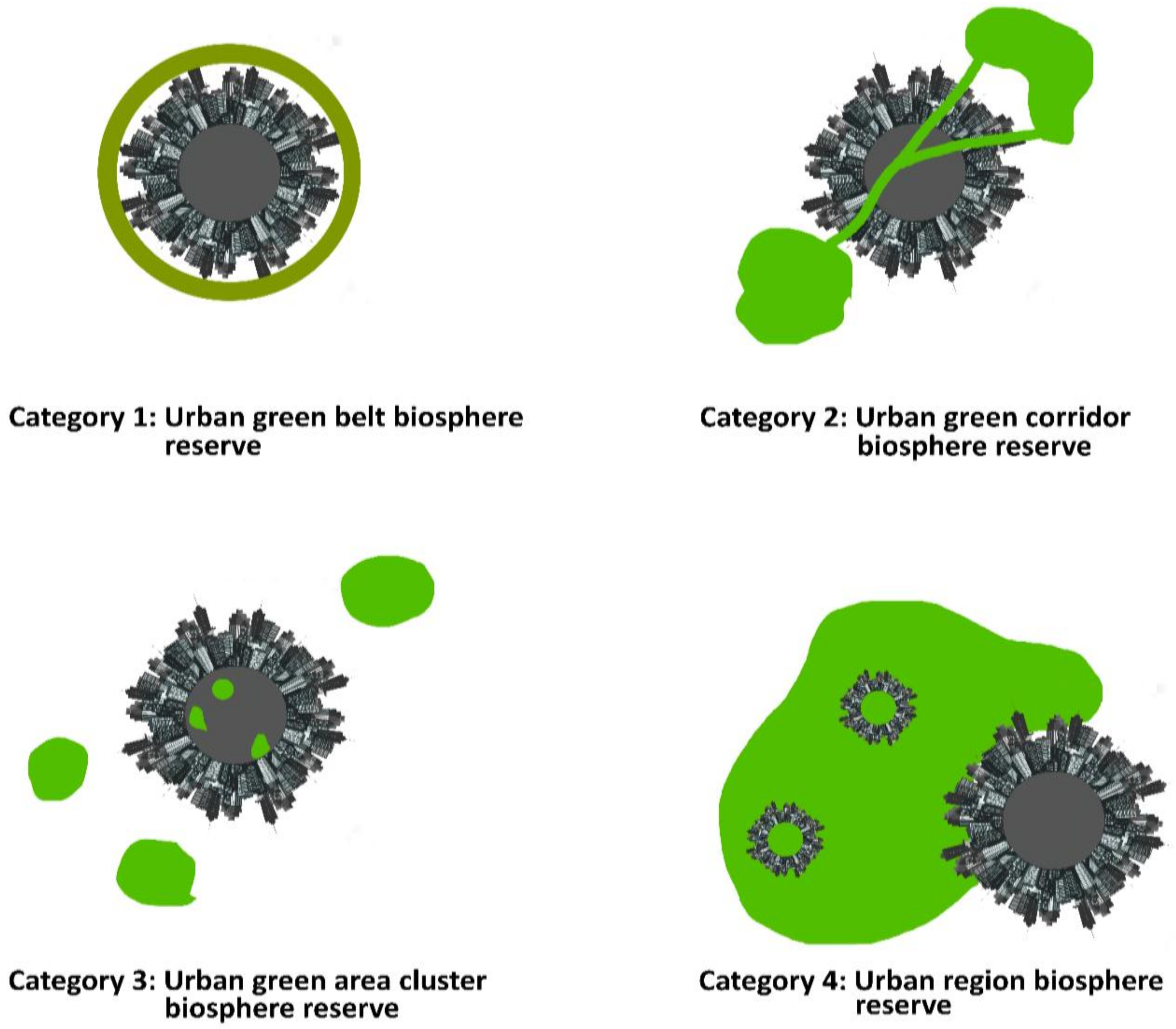
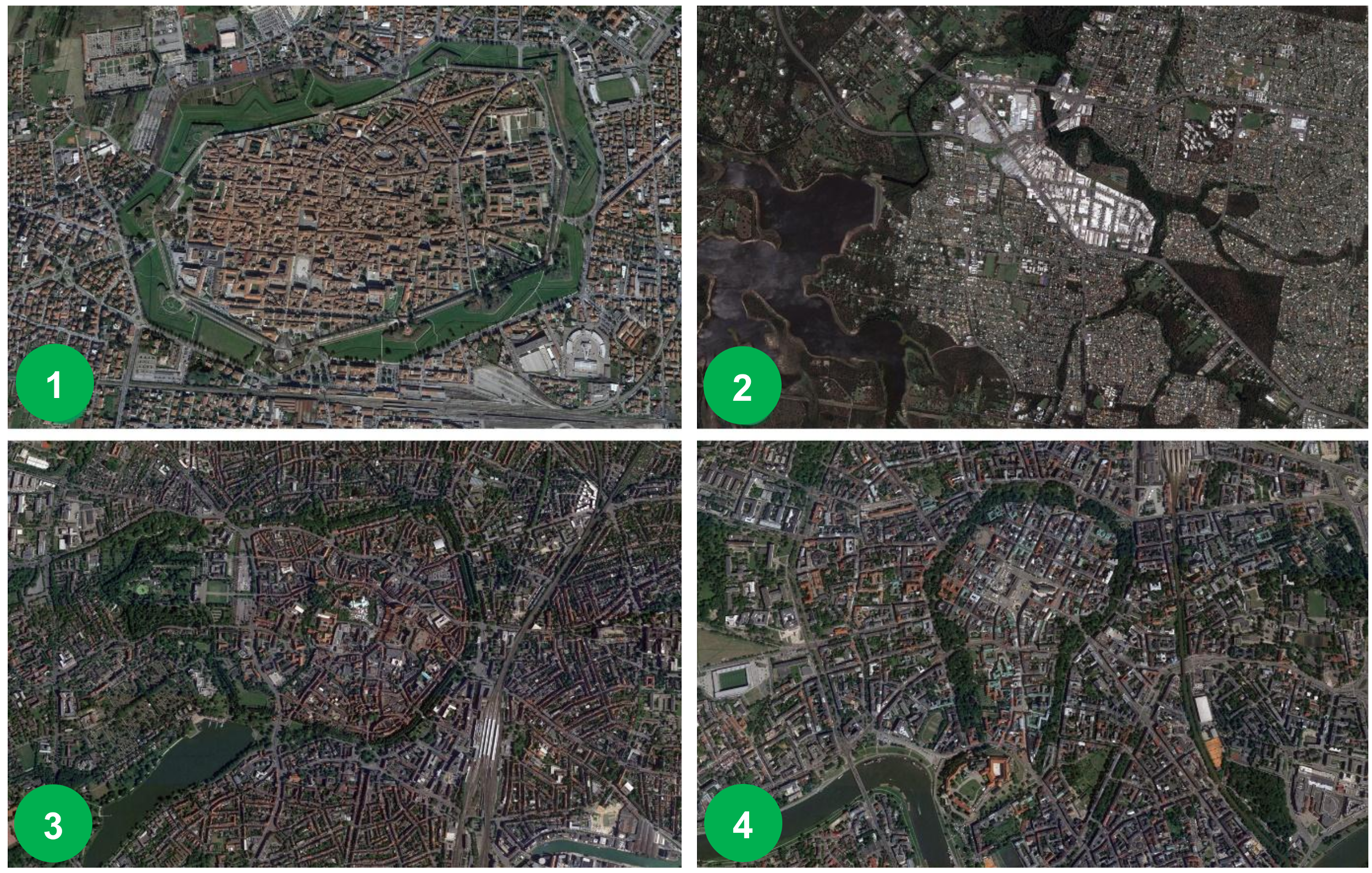
| Type of Urban Space | Effect and Social Costs |
|---|---|
| Neglected | neglecting public space, both physically and in the face of market forces |
| Invaded | sacrificing public space to the needs of cars, effectively allowing movement needs to usurp social ones |
| Exclusionary | allowing physical and psychological barriers (fear of “the other”) to dominate public space design and management strategies |
| Consumption | failing to address the relentless commodification of public space |
| Privatised | allowing public space to be privatised, with knock-on impacts on political debate and social exclusion |
| Segregated | reflecting the desire of affluent groups in many societies to separate themselves from the rest of society, reflecting a fear of crime or simply the desire to be exclusive |
| Insular | failing to halt a more general retreat from public space into domestic and virtual realms |
| Invented | condoning the spread of a placeless, formula-driven entertainment space |
| Scary | where crime and more often fear of crime, are allowed to dominate the design management and perceptions of place |
| Homogenised | generally presiding over a homogenisation of the public built environment in the face |
| Strategies | Measures | References |
|---|---|---|
| Enhance visual connections |
| Jim & Chen, 2006 [26]; Lau & Yang, 2009 [64]; Zhang & Lin, 2011 [66] |
| Manipulating space Morphology |
| Lau & Yang, 2009 [64] |
| Facilitate natural ventilation and day lighting |
| Berkovic et al., 2012 [67]; Lau & Yang, 2009 [64]; Wania et al., 2012 [68] |
| Select plant species |
| Bigirimana et al., 2012 [71]; Lau & Yang, 2009 [64]; Russo et al., 2017 [13]; SITES, 2016 [56] |
| Integrating vegetation in buildings |
| Li & Yeung, 2014 [72]; SITES, 2016 [56]; Whittinghill & Rowe, 2012 [69]; Russo et al., 2017 [13] |
| Reduce urban heat island effects |
| Ren et al., 2013 [73]; SITES, 2016 [56]; Taleb & Abu-Hijleh, 2013 [70] |
© 2018 by the authors. Licensee MDPI, Basel, Switzerland. This article is an open access article distributed under the terms and conditions of the Creative Commons Attribution (CC BY) license (http://creativecommons.org/licenses/by/4.0/).
Share and Cite
Russo, A.; Cirella, G.T. Modern Compact Cities: How Much Greenery Do We Need? Int. J. Environ. Res. Public Health 2018, 15, 2180. https://doi.org/10.3390/ijerph15102180
Russo A, Cirella GT. Modern Compact Cities: How Much Greenery Do We Need? International Journal of Environmental Research and Public Health. 2018; 15(10):2180. https://doi.org/10.3390/ijerph15102180
Chicago/Turabian StyleRusso, Alessio, and Giuseppe T. Cirella. 2018. "Modern Compact Cities: How Much Greenery Do We Need?" International Journal of Environmental Research and Public Health 15, no. 10: 2180. https://doi.org/10.3390/ijerph15102180
APA StyleRusso, A., & Cirella, G. T. (2018). Modern Compact Cities: How Much Greenery Do We Need? International Journal of Environmental Research and Public Health, 15(10), 2180. https://doi.org/10.3390/ijerph15102180






